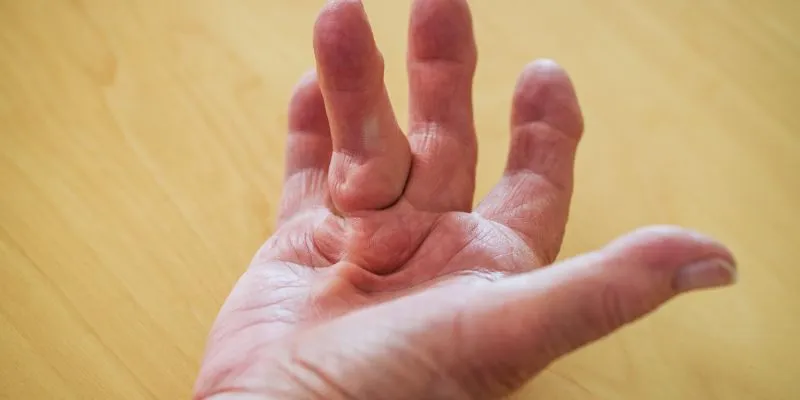Everything You Need to Know About Birthmarks
Birthmarks are colored spots on the skin that appear at birth or shortly after. They can be found anywhere on the body, including the face and scalp, and vary widely in size and shape. While some birthmarks fade over time, others persist and may require removal if they cause complications.
Most birthmarks are harmless and resolve on their own, but some can indicate underlying health issues or, in rare cases, develop into tumors. This article explores the different types of birthmarks, their causes, potential complications, and treatment options to ensure they remain benign.

What Are the Causes of Birthmarks?
The exact causes of birthmarks are often unknown, but they typically occur by chance. Some factors that may contribute to the development of birthmarks include:
- Blood Vessel Abnormalities: Vascular birthmarks result from improperly developed blood vessels that are excessively wide or clustered. Examples include hemangiomas and port-wine stains.
- Pigment Cell Overgrowth: Pigmented birthmarks arise from an overabundance of pigment cells, which give skin its color. These birthmarks can be blue, black, gray, brown, or tan.
- Genetic Predisposition: Some birthmarks are inherited from family members.
- Underlying Health Issues: Severe health conditions, such as neurofibromatosis or skin cancer, may cause certain birthmarks.

What Are the Different Types of Birthmarks?
Here are the various types of birthmarks:
- Vascular Birthmarks: These often red birthmarks, including hemangiomas and port-wine spots, result from veins that did not develop properly.
- Pigmented Birthmarks: These arise from an overabundance of pigment cells and may appear in tan, brown, gray, black, or blue hues.
- Café-au-lait Spots: These are harmless, hyperpigmented spots that range from light brown to chocolate brown and are commonly oval. They are frequently found on the torso, buttocks, and legs.
- Angel Kisses and Stork Bites: The most common vascular birthmarks, appearing on the eyelids, nose, forehead, and upper lip, usually diminish with age.
- Mongolian Spots: Smooth, blue or blue-gray birthmarks typically found on the lower back, more common among children of Asian, Southern European, Hispanic, Pacific Island, or African descent.
Complications of Birthmarks
Most birthmarks do not cause long-term health issues and eventually fade. However, pigmented birthmarks in visible areas, like the face, can lead to psychological distress. Additionally, certain birthmarks, like strawberry marks, may become irritated and infected.
Individuals with large congenital melanocytic nevi have a 5%-10% risk of developing melanoma, a serious skin cancer. Port-wine stains near the eye can increase the risk of glaucoma. Children with strawberry marks on the eyelids require prompt treatment to prevent visual problems. In rare cases, Sturge- Weber syndrome, a condition affecting the skin, brain, and eyes, may cause port-wine stains.
Treatments for Birthmarks
If you’re concerned about a birthmark’s appearance or potential health risks, consult a doctor about removal options. Avoid attempting to remove birthmarks at home. If there’s an elevated risk of skin cancer, medical removal may be recommended.
Treatment options include:
Laser Therapy
Laser therapy can lighten or remove port-wine stains, making them less visible. A dermatologist or surgeon administers this treatment using focused pulsating light beams. Early intervention, often in childhood, may enhance effectiveness, though treatments work for all ages. Multiple sessions are usually needed, and local anesthesia may be used for painful procedures. Temporary bruising or swelling may occur.
Beta-Blockers and Corticosteroids
Beta-blockers, like propranolol, are oral medications used to reduce the size or appearance of hemangiomas by constricting blood vessels and decreasing blood circulation. Timolol, another beta-blocker, may have similar effects. Corticosteroids, anti-inflammatory drugs, can be injected into birthmarks or taken orally to shrink them by affecting blood vessels directly.
Surgery
If other treatments fail and the birthmark poses health risks, surgery might be recommended. Surgical removal is effective for large hemangiomas that could damage surrounding tissue. Some birthmarks can be removed in a dermatologist’s office with local anesthesia. Extensive birthmarks may require multiple appointments for complete removal. Tissue expansion, a surgical technique, can also help create a flap of healthy skin to cover the removed birthmark area.
Conclusion
Birthmarks are spots that appear at birth or early in life on or under the skin. They are not the result of any actions taken during pregnancy but are natural variations in appearance. Most birthmarks are harmless and may fade over time, though some may persist and carry cancer risks. Treatments like laser therapy can effectively remove them, especially when done in infancy.










